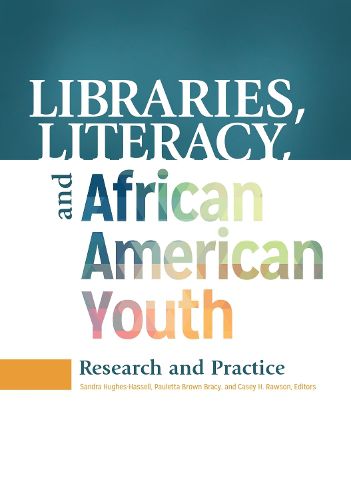Readings Newsletter
Become a Readings Member to make your shopping experience even easier.
Sign in or sign up for free!
You’re not far away from qualifying for FREE standard shipping within Australia
You’ve qualified for FREE standard shipping within Australia
The cart is loading…






This important book is a call to action for the library community to address the literacy and life outcome gaps impacting African American youth. It provides strategies that enable school and public librarians to transform their services, programs, and collections to be more responsive to the literacy strengths, experiences, and needs of African American youth.
According to National Assessment of Educational Progress (NEAP), only 18 percent of African American fourth graders and 17 percent of African American eighth graders performed at or above proficiency in reading in 2013. This book draws on research from various academic fields to explore the issues surrounding African American literacy and to aid in developing culturally responsive school and library programs with the goal of helping to close the achievement gap and improve the quality of life for African American youth.
The book merges the work of its three authors along with the findings of other researchers and practitioners, highlighting exemplary programs, such as the award-winning Pearl Bailey Library Program, the Maker Jawn initiative at the Free Library of Philadelphia, and the Blue Ribbon Mentor Advocate writing institute in the Chapel Hill-Carrboro City Schools, among others. Readers will understand how these culturally responsive programs put theory and research-based best practices into local action and see how to adapt them to meet the needs of their communities.
Clarifies the role of public and school librarians in meeting the literacy needs of African American youth
Brings together research findings on the literacy strengths and needs of African American youth and best practices for librarians seeking to improve their services to this population
Provides specific examples of successful programs for working with African American youth that can be adapted by other school or public libraries
Creates an ongoing vehicle for collaborative learner-centered relationships between public and school librarians serving the same community
$9.00 standard shipping within Australia
FREE standard shipping within Australia for orders over $100.00
Express & International shipping calculated at checkout
Stock availability can be subject to change without notice. We recommend calling the shop or contacting our online team to check availability of low stock items. Please see our Shopping Online page for more details.
This important book is a call to action for the library community to address the literacy and life outcome gaps impacting African American youth. It provides strategies that enable school and public librarians to transform their services, programs, and collections to be more responsive to the literacy strengths, experiences, and needs of African American youth.
According to National Assessment of Educational Progress (NEAP), only 18 percent of African American fourth graders and 17 percent of African American eighth graders performed at or above proficiency in reading in 2013. This book draws on research from various academic fields to explore the issues surrounding African American literacy and to aid in developing culturally responsive school and library programs with the goal of helping to close the achievement gap and improve the quality of life for African American youth.
The book merges the work of its three authors along with the findings of other researchers and practitioners, highlighting exemplary programs, such as the award-winning Pearl Bailey Library Program, the Maker Jawn initiative at the Free Library of Philadelphia, and the Blue Ribbon Mentor Advocate writing institute in the Chapel Hill-Carrboro City Schools, among others. Readers will understand how these culturally responsive programs put theory and research-based best practices into local action and see how to adapt them to meet the needs of their communities.
Clarifies the role of public and school librarians in meeting the literacy needs of African American youth
Brings together research findings on the literacy strengths and needs of African American youth and best practices for librarians seeking to improve their services to this population
Provides specific examples of successful programs for working with African American youth that can be adapted by other school or public libraries
Creates an ongoing vehicle for collaborative learner-centered relationships between public and school librarians serving the same community